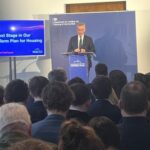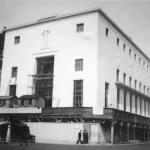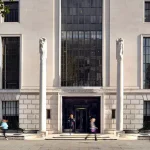AIA Kansas City Architecture Event, Legible Cities USA, American contemporary urban environments
AIA Kansas City Event : Legible Cities
KC Architecture, United States of America
13 Feb 2013
AIAKC Legible Cities
Mar 6, 2013 5:30pm – 7:00pm
Burns & McDonnell Auditorium, 9400 Ward Prkwy, Kansas City, Missouri, USA
Description
Legible Cities Event
Legible Cities is a trend in which contemporary urban environments are piloting programs that leverage their vast storehouses of data to enhance city’s services and improve inhabitants’ quality of life. If information is the currency of the world, then many cities have under-leveraged assets buried deep in their data on urban conditions, city operations and the environment. Couple with other data sources, the promise of releasing big data to the people is a new approach to understanding cities by making them more legible.
Now it is difficult, if not impossible, for someone trying to read the “big picture” of a city. Legible Cities ties together data, media architecture displays, sensors, wireless networks, data visualization and ways of accessing information to make cities more navigable, legible, and livable for its inhabitants. Legible Cities mediates physical and virtual space through installations, digital signage, mobile apps and online and off line programs.
In Legible Cities time is used to measure and report the “now”, for events, locations, communications and services that range from real-time bus schedules to virtual land use planning and more. Providing an historical lens into the city’s past will inform the present into the future. This is a revolution in measurement. “…There are now countless digital sensors worldwide in industrial equipment, automobiles, electrical meters and shipping crates. They can measure and communicate location, movement, vibration, temperature, humidity, even chemical changes in the air.”
The Age of Big Data, Steve Lohr, The New York Times Sunday Review, February 11, 2012 We’ve chosen to call this trend Legible Cities rather than Smart, Intelligent, or Digital Cities, as terms from the government’s perspective, focused on the hard infrastructure of computers, networks, and the top-down inside-out development of software services for city management and urban design. Legible Cities implies the end users’ point of view – their participation, usage and understanding inherent in the bottom up process – the soft infrastructure of human capital. Merging the ways that people participate in Legible Cities from the street and develop it organically from the ground up –with the enterprise software and IT/telecom infrastructure will determine Legible Cities’ ultimate success.
The Mobile City (an international research group on mobile media and urban design in Amsterdam) speaks about bottom-up participation in Legible Cities which it defines as collective mapping tools, citizen scientist’s projects gathering data about their environment, multiplayer simulations games for urban planning, mapping and tracking issues of common concern and media facades that communicate communal rhythms of a city.
Architect’s Role in Legible Cities
Architects could have an important role in Legible Cities as they develop new models of the built environment by layering information and intelligent into structure and design, incorporating social media, location based services, tagging systems for personalized content, natural user interfaces and advanced technologies such as augmented reality, data visualizations and multiplayer networked games. Architects are stepping beyond their traditional role as designers into one of interpreters of our complex, technologically accelerating world and leaders in new communication channels such as Legible Cities.
The 60-minute moderated panel, to take place at the AIA annual conference in Denver on June 20-22, 2013 will present case studies of pilot Legible Cities programs in three different cities – from Pennsylvania, Bristol, England and Zaragoza, Spain. The panel would explore the role architects could play in Legible Cities. And could Legible Cities be a new source of architectural projects and developments.
Learning Objectives
To satisfy the learning objectives, the course is divided into three major segments. The first is a focused on definitions of legible cities and how they are distinct from smart and digital city models. The second segment is background information on the trends and data that are driving cities to incorporate smart technology. The last segment will be on how many projects are in development around the world, what works and what doesn’t, and the opportunities and challenges. The course is designed for audience participation with a significant amount of time reserved an interactive follow up questions and answers period and discussions.
We will present four different points of view of legible cities using digital video, imagery and web-based material. Each speaker has been invited based on their distinct expertise from master planning, transportation and way finding, media art installations, to spatial design of information in architectural spaces, to media architecture and applications of media and technology in the built environment.
We will present strategic planning of the key components of legible cities including cultural integration, hardware and networks, ICT infrastructure, digital wayfinding, and developing innovative business models and programs for Legible Cities projects. We assume that there will be back channel communication during the course, so we plan to consider integration with AIA social media programs.
Event Details
March 6, 2013 5:30pm – 7:00pm
Burns & McDonnell Auditorium
9400 Ward Prkwy,
Kansas City, Missouri, USA
Contact
Eli Kuslansky
P: (212) 532-9595 x 222
M: (917) 626-3118
E: elik2unifiedfield.com
W: http://www.unifiedfield.com
B: http://www.unifiedfield.com/blog
Kansas City Design Week Events
Feb 28 – Mar 8, 2013
Kansas City Design Week
Location: Burns & McDonnell Auditorium, 9400 Ward Prkwy, Kansas City, Missouri, USA
American Architecture
Kansas City Sustainable Residence
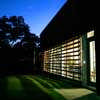
photo Courtesy of Studio 804
American Architecture Events
SCI-Arc Architecture Events
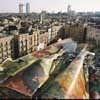
photo : Alex Gaultier
SCI-Arc Architecture Events, LA : Los Angeles Architectural Lectures + Exhibitions
Princeton University Art Museum
PSU Department of Architecture Events
Savannah College of Art and Design Events
Storefront for Art and Architecture
UB School of Architecture Events
UCLA Architecture and Urban Design
University of Oregon Department of Architecture Events
Yale School of Architecture Events
Comments / photos for the AIA Kansas City Architecture – Legible Cities Event page welcome

